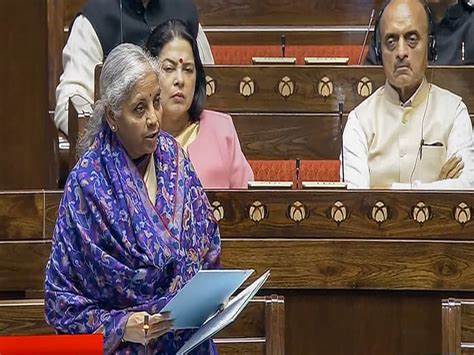New Delhi: The Indian economy is more stable, and on a trajectory of growth and recovery, noted the White Paper’ tabled in the Lok Sabha by Union Finance Minister Nirmala Sitharaman on Thursday.
The paper meticulously dissected the economic governance of the United Progressive Alliance (UPA) era and juxtaposed it with the performance of the Modi-led government over the past decade.
“When we formed the government in 2014, the economy was in a fragile state; public finances were in a bad shape; there was economic mismanagement and financial indiscipline, and there was widespread corruption. It was a crisis situation. Now that we have stabilised the economy and set it on a recovery and growth path, it is necessary to place in the public domain the seemingly insurmountable challenges – left behind as a legacy by the UPA Government,” it said.
According to the paper, the UPA government severely faltered in fostering economic activities and imposed obstacles that held back the economy. “It basked in the after-glory of the lagged effects of the reforms of the Vajpayee-led NDA government and benign global conditions and proceeded to exploit the resultant fast economic growth for narrow political purposes without much concern for long-term economic consequences,” it said.
This resulted in a “mountain of bad loans”, a substantial fiscal deficit, albeit partially concealed, a high current account deficit, “double-digit inflation for five years” which adversely impacted the pockets of many Indians and nclusion in the roster of “Fragile Five” in 2013. They not only failed to impart dynamism into the economy but also robbed the economy of it such that our industrialists went on record stating that they would rather invest abroad than in India, the report added.
Fragile Five was the term issued to India, along with Turkey, Brazil South Africa and Indonesia, by investment bank Morgan Stanley for allegedly being too reliant on foreign investment to fuel their growth ambition.
The paper highlighted that the UPA government inherited a robust economy primed for further reforms but rendered it underperforming during its ten-year tenure. In 2004, at the onset of the UPA government’s term, the economy was expanding at a rate of 8 per cent, with industry and services sectors growing above 7 per cent each, and the agriculture sector experiencing a revitalising growth rate above 9 per cent in FY04, amid a favourable global economic climate.
The paper also informed about the policies and measures taken by the government under PM Modi to “restore the health of the economy and make it vigorous and capable of fulfilling the growth aspirations of the people in the present and in the Amrit Kaal”.
HIGHLIGHTS
>> The reforms implemented by the Modi government led to India’s transformation from being part of the ‘Fragile Five’ to joining the ranks of the ‘Top Five’ in approximately a decade.
>> The reforms initiated by the government have enhanced the investor sentiment and fostered a positive outlook for the economy.
>> The Indian banking system has transitioned from a state of ailment to robust health.
>> Persistent implementation of measures to uncover illicit funds and deter their utilisation enhanced the vitality of the economy and the corporate sector.
>> An Expenditure Reform Commission was established to streamline and prioritise government spending.
The 47-page paper concludes by stressing: “Our government, unlike its predecessor, invested in the foundations of the economy along with building a sturdy superstructure. Looking back at the last ten years, we can say with humility and satisfaction that we have successfully overcome the challenges left behind by the previous government. That said, we are not resting on our laurels. There are miles to go and mountains to scale before we sleep.”



Comments are closed.